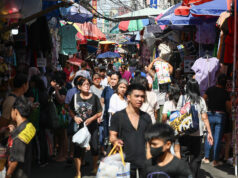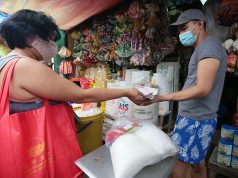Aug. fall caps year-to-date FDI growth
NET foreign direct investments (FDI) slipped to a five-month low in August as all components bared smaller inflows, the central bank reported on Monday.
August saw $752 million in FDI net inflows, down 17.7% from July’s $914 million and 41.2% less than the $1.28 billion a year ago.
That was the smallest FDI net inflow, so far, since March’s $697 million, according to data from the Bangko Sentral ng Pilipinas (BSP).
FDIs infuse capital into the economy, supporting business expansion that, in turn, generates more jobs, buoying consumer spending.
August inflows brought the year-to-date tally to $7.422 billion, 31% more than the $5.665 billion that entered the country in last year’s comparable eight months. This was 82% of the central bank’s $9.2-billion FDI forecast for the entire year, with four months left to spare.
FDI net inflows totalled $10.049 billion in 2017.
Investments in both debt instruments and equity kept coming during the month, but were lower compared to August 2017 inflows that were the biggest in 16 months, according to central bank data.
Bulk of investments were in debt instruments, reaching $534 million in August. However, this was 6.2% less than the $569 million placements a year ago, representing funds infused by foreign parent firms to their subsidiaries or affiliates in the Philippines.
Equity investments showed $172-million net inflows, smaller than July’s $261 million and about a fourth of the $652 million received a year ago. Broken down, foreign investors placed $187 million in the Philippines and pulled out $16 million in August.
Reinvested earnings totalled $47 million, down from August 2017’s $59 million.
Manufacturing continued to get a chunk of investments, the central bank said. Other sectors that benefited from sustained FDI flows were financial and insurance; real estate; arts entertainment and recreation; as well as electricity, gas, steam and air-condition supply activities.
The biggest sources were Singapore, Hong Kong, the United States, Japan and China.
The government reported a disappointing six percent economic growth in the second quarter, which last week was revised to 6.2%.
Still, the BSP said in a statement that the latest data showed “continued favorable investor sentiment in the Philippine economy.”
Sought for comment, one economist said the slide in FDIs is unlikely to persist. “This may be temporary. In general, the macroeconomic fundamentals are still respectable. I still see a robust ending to FDI inflows,” said Ruben Carlo O. Asuncion, chief economist at Union Bank of the Philippines.
Economic growth slowed to 6.1% in the third quarter, bringing the nine-month average to 6.3%, short of the 6.5-6.9% government target for 2018.
Other observers flagged uncertainty in the local tax regime, amid moves to revamp fiscal incentives, as a concern of foreign investors.
Economic managers are banking on recent changes to the Foreign Investment Negative List (FINL) to entice more global businesses to enter the Philippine market. President Rodrigo R. Duterte has opened up Internet businesses, insurance and financing companies, and public works to bigger foreign participation through the 11th FINL signed Oct. 29, although some foreign business leaders described the updates as “modest gains”. — Melissa Luz T. Lopez



